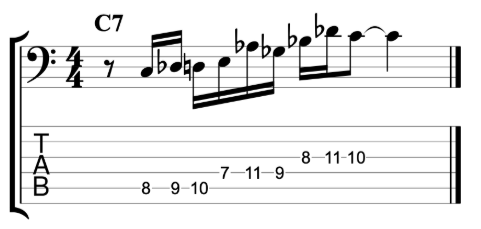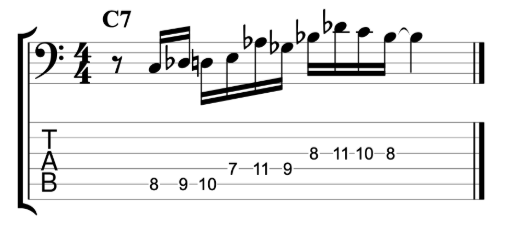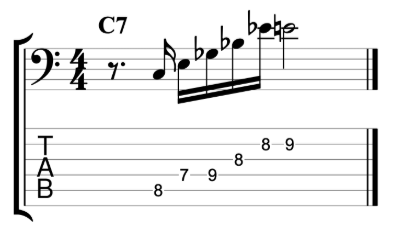Chord Tones in Jazz Solos – Bass Practice Diary – 31st March 2020
When you’re playing a jazz solo, is it better to think about scales or chord tones (arpeggios)? I’ve heard musicians having that kind of debate before, but I’m presenting it here as a bit of a trick question. Because the chord tones exist within the scales so why would you think of them as being two separate things. I think it really helps if you focus on chord tones in jazz solos. You could think of your improvised lines as being lines that connect the chord tones.
Connecting Chord Tones
Chord tones are probably the strongest notes that you can use in a melody. But if you play melodic lines that only use chord tones, they can sound boring and formulaic. So I try to find ways of showcasing the chord tones in my solos by placing them in key places, like at the start and end of phrases. Scales are a great way of connecting up chord tones, so my advice is to always know where the chord tones are, even when you’re using scales.
I’ve featured the altered scale before in my Bass Practice Diary. It’s a great way of creating an outside sound on dominant 7th chords. It works because it features the three strongest chord tones in a dominant 7th chord, the root, 3rd and 7th. But the other four notes in the scale are outside notes or altered notes, b9, #9, b5 and b13. If you feature those altered notes too heavily it can sound very uncomfortable. But if you use them as notes to connect up the three chord tones it can create some really cool tension and release.
So, to take advantage of that, you need to know where the chord tones are. Here’s a C altered scale with the root, 3rd and 7th marked.

Here are some simple lines I came up with that connect chord tones on a C7 chord. This one starts and finishes on the root.

This is the same lick finishing on the 7th.

C7 altered lick – Root to 7th
Here’s one that starts on the root and finishes on the 3rd.



One thought on “Chord Tones in Jazz Solos – Bass Practice Diary 101”
Comments are closed.